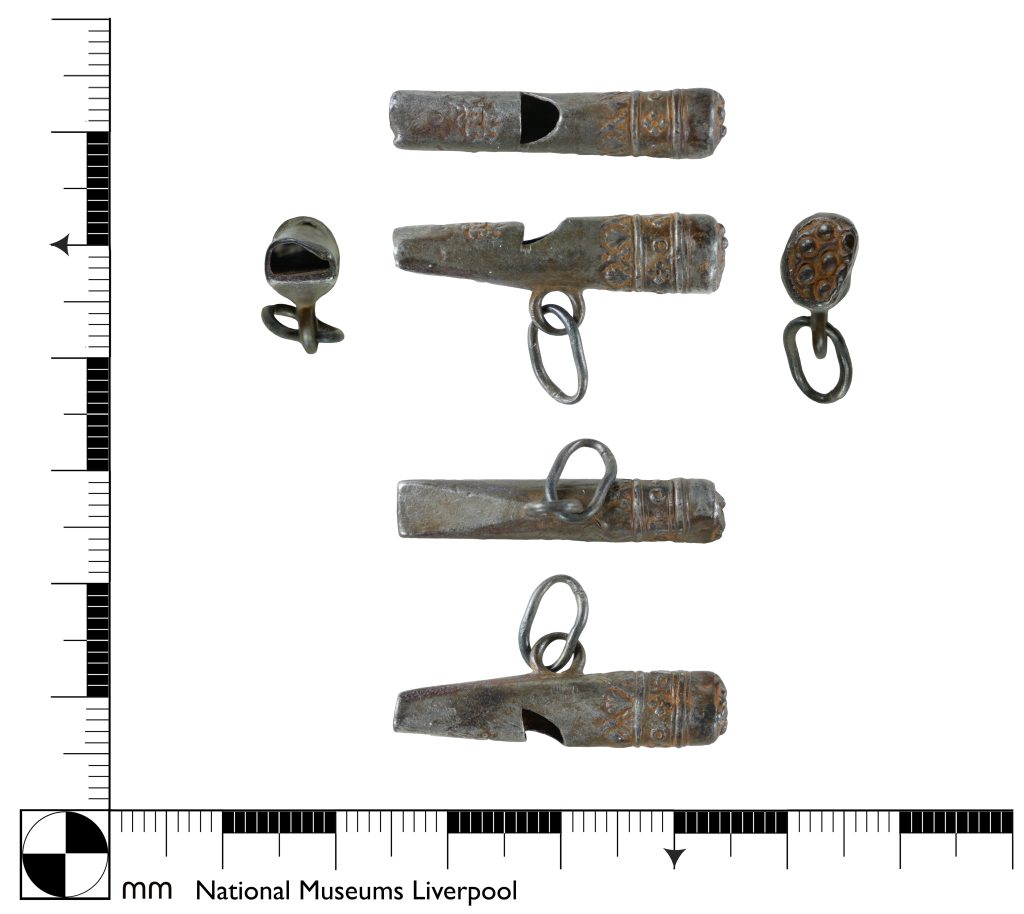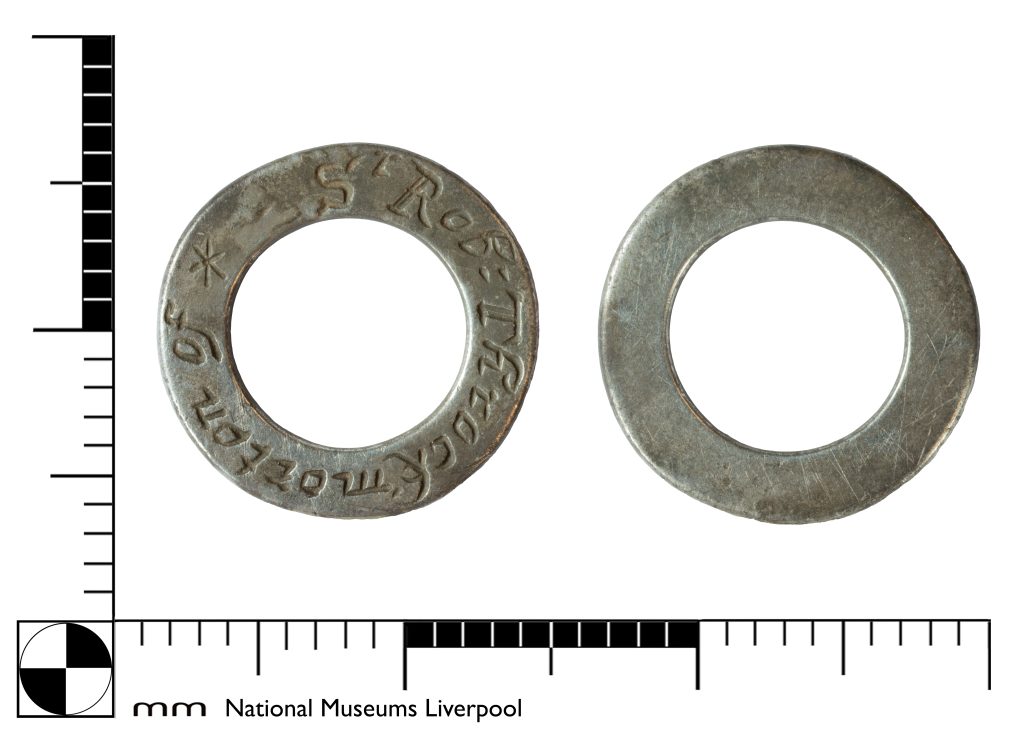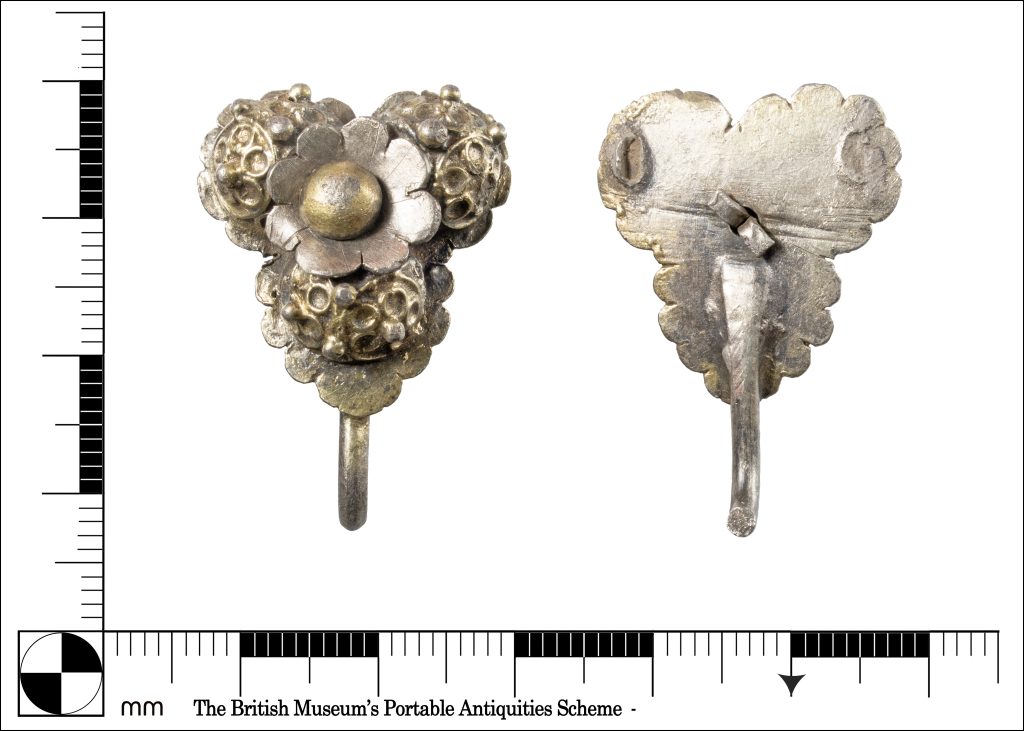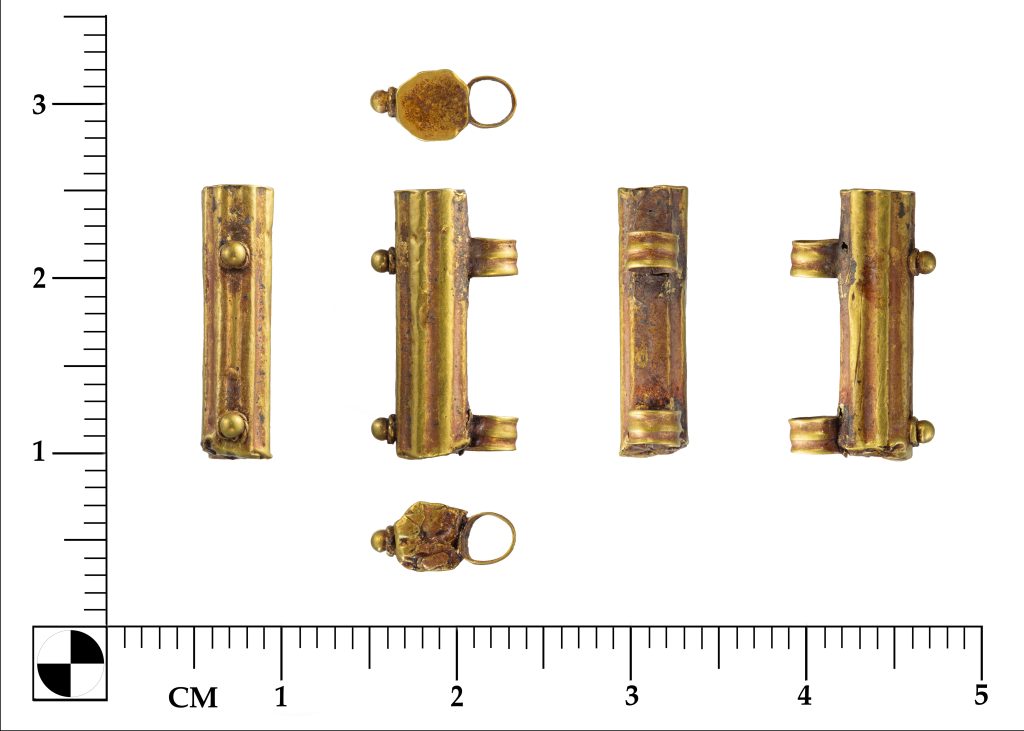More treasures recovered from Shropshire’s fields to be acquired for museum
John Ellery, HM Senior Coroner for Shropshire, Telford and Wrekin, has ruled in four separate treasure inquests today (Tuesday 5 September 2023): all relating to finds in the Shropshire countryside and dating as far back as the post medieval period AD200-400.
The items declared treasure were a complete silver whistle dating to the post medieval period (c.AD 1600-1700) and found in the Whitchurch rural area.

Silver whistle. Photo: National Museums Liverpool
A complete silver verval dating to the post medieval period (c.AD 1600-1720) and a post medieval silver dress hook dating to c. AD 1500-1600, which were both uncovered in Stoke on Tern, and a Roman gold amulet case dating to the post medieval period (c. AD 200-400) which was found in Pontesbury.

Stoke Upon Tern verval. Photo: National Museums Liverpool

Silver dress hook. Photo: British Museum’s Portable Antiquities Scheme
Emma-Kate Lanyon, curator for Shropshire Council’s museum and archives service, said:-
“Whistles like this example are thought to have been used for hunting with dogs or hawks and vervals were worn on a falcon’s leg to identify its owner, a bit like a dog tag and these two objects nicely sum up the importance of hunting as a pastime for the wealthy in Tudor and Stuart times.
“Dress hooks were used to fasten outer garments or to drape up skirts, either to keep them above the muddy streets or to show off the rich fabric of the underskirt. They are often made of precious silver and silver-gilt and are highly decorative. Documentary evidence suggests that dress hooks were often owned in pairs, as records exist of them being gifted wills and listed in personal inventories. I imagine whoever lost this one was upset – it’s a really lovely example.”
“The Roman gold amulet case is the third example to have been discovered in Shropshire. Although nationally a rare find, this example from Pontesbury follows earlier discoveries at Condover and Eaton Constantine.
“This is clear evidence that the Roman troops stationed in Shropshire, included a group of soldiers recruited from Pannonia, a Roman province situated where western Hungary is today. It is fascinating to imagine these men, far from home, wearing this personal reminder of the native culture, homeland and family.”

Golden Roman amulet case. Photo: CM.
Shropshire Council will be applying for grant aid to help us acquire these items to enhance our museum displays and keep them in the public domain.
Robert Macey, Shropshire Council’s Cabinet member for culture and digital, said:-
“These are just the most recent objects to illustrate the rich history of the county. Acquiring them will help us share Shropshire’s unique history with our visitors.”
All finds have been reported through the Portable Antiquities Scheme, having been found by responsible metal detecting.

